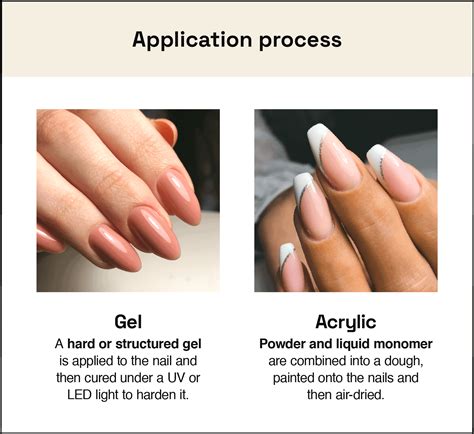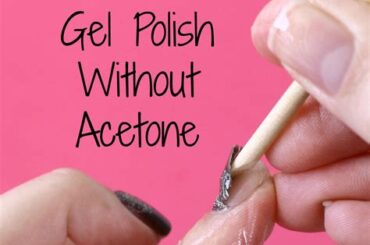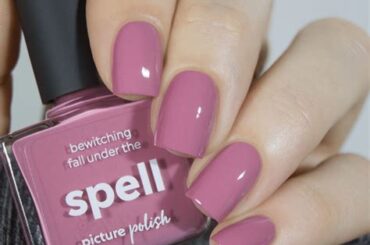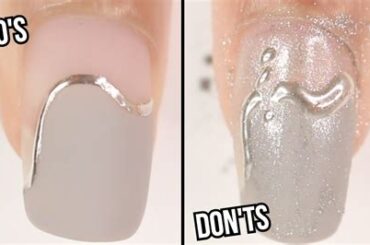Discover the benefits of gel, acrylic, and regular nail polish and learn how to apply them for long-lasting, beautiful nails.
Understanding Gel Nail Polish
Gel nail polish is a type of nail polish that is cured under a UV or LED lamp. It is known for its durability and long-lasting wear compared to regular nail polish. Gel polish is made from a blend of acrylic monomers and oligomers that harden when exposed to UV light, resulting in a glossy, chip-resistant finish.
When understanding gel nail polish, it’s important to know that the application process involves applying a base coat, two layers of the gel polish, and a top coat, with each layer being cured under the UV or LED lamp. Gel polish also requires soaking in acetone to remove it, as it cannot be removed with regular nail polish remover.
One of the main benefits of gel nail polish is its long-lasting wear. It can last up to two weeks without chipping or peeling, making it a popular choice for those who want a low-maintenance manicure. Additionally, gel polish comes in a wide range of colors and finishes, including glitter and metallic options, allowing for versatile nail looks.
Benefits of Gel Polish
Nail Polish Formulas Demystified: The Difference Between Gel, Acrylic, and Regular Polish
Gel polish has gained popularity in recent years due to its numerous benefits for nail enthusiasts. One of the major benefits of gel polish is its long-lasting quality. Unlike regular nail polish, gel polish can last for up to two weeks without chipping or fading, making it the perfect choice for those with busy lifestyles.
Another advantage of gel polish is its quick drying time. Traditional nail polish can take a long time to dry, leaving the risk of smudging and ruining the manicure. Gel polish, on the other hand, dries instantly under a UV or LED light, allowing for a flawless finish in a fraction of the time.
Additionally, gel polish offers a high-gloss, shiny finish that lasts throughout the wear. This gives the nails a polished and professional look that lasts for weeks without the need for touch-ups. The durability and sheen of gel polish make it a top choice for those who want low-maintenance, long-lasting nail color.
Application of Gel Polish
Application of Gel Polish
Gel nail polish application requires a few extra steps compared to regular nail polish application. Before beginning, make sure to properly prepare the nails by shaping and buffing them to create a smooth surface. Then, start with a base coat to protect the natural nail and provide a smooth surface for the gel polish to adhere to.
After applying the base coat, cure the nails under a UV or LED lamp according to the gel polish manufacturer’s instructions. This step is crucial as it hardens the gel polish and ensures long-lasting wear. Next, apply the first coat of gel polish, making sure to paint thin, even layers for the best results. Again, cure the nails under the lamp before applying a second coat, if desired.
Once the desired color and intensity are achieved, finish the gel polish application with a top coat to seal in the color and add shine. Cure the nails for the final time to lock in the top coat and ensure a durable finish. Be sure to clean up any excess polish around the edges of the nails with a brush or cotton swab dipped in polish remover for a clean, professional look.
Understanding Acrylic Nail Polish
Acrylic nail polish is a type of nail polish that is made from a combination of liquid monomer and a powder polymer. This formula creates a strong and long-lasting finish that is popular among those looking for durable and sturdy nail enhancements. Acrylic nail polish is often used for nail extensions or overlays to add length and strength to the natural nails. This formula is also known for its ability to resist chipping and lifting, making it a popular choice for those with active lifestyles or jobs that require their hands to be exposed to a lot of wear and tear.
When applied, acrylic nail polish dries through a chemical reaction between the liquid monomer and the powder polymer. This process creates a hard and durable surface that is resistant to cracks and breakage. Acrylic polish is often used by nail technicians in salons to create a variety of nail shapes and designs, as it can be easily molded and shaped before it hardens. This makes it a versatile option for those looking for customizable nail enhancements that can be tailored to their specific preferences.
Overall, acrylic nail polish is a popular choice for those looking for strong and long-lasting nail enhancements. Its durable formula and versatility make it a top choice for those wanting to add length and strength to their natural nails, while also allowing for creative and customizable nail designs. Understanding the unique properties of acrylic nail polish can help you make an informed decision when choosing the best nail enhancement for your needs.
Benefits of Acrylic Polish
Acrylic nail polish is a popular choice for many people because of its long-lasting benefits. One of the main benefits of acrylic polish is its durability. Unlike regular nail polish, acrylic polish is much tougher and less likely to chip or break. This means that your manicure will last much longer, saving you time and money in the long run.
Another benefit of acrylic polish is its versatility. It can be easily manipulated to create different nail shapes and designs, making it ideal for those who want to experiment with their nail art. Acrylic polish also dries quickly, which is perfect for those who are always on the go and don’t have time to wait for their nails to dry.
Finally, acrylic polish is great for strengthening weak or damaged nails. The formula contains ingredients that promote nail growth and strengthen the natural nail, making it a great choice for those who struggle with brittle nails. Overall, the benefits of acrylic polish make it a popular choice for those who want a long-lasting and versatile manicure.
Application of Acrylic Polish
When it comes to the application of acrylic nail polish, it is important to understand the process and the steps involved. Acrylic polish is a popular choice for those looking for durable and long-lasting nail color. The application process starts with preparing the natural nail by pushing back the cuticles and gently buffing the surface to create a smooth base for the acrylic polish.
Once the nails are prepped, a primer is applied to promote adhesion between the natural nail and the acrylic product. After the primer has dried, the acrylic powder and liquid are mixed to create a bead of acrylic that is then shaped and applied to the nail. The nail technician uses a brush to sculpt and shape the acrylic, ensuring a smooth and even application.
After the acrylic has been applied and shaped, it is allowed to air dry or cure under a UV or LED lamp. Once the acrylic is fully set, the nails are filed and buffed to create a smooth and even surface. The final step involves applying a top coat to seal and protect the acrylic, leaving the nails with a glossy and long-lasting finish.
Understanding Regular Nail Polish
Regular nail polish, also known as traditional nail polish, is the most commonly used type of nail polish. It is typically made with a combination of nitrocellulose, resins, and plasticizers. This formula allows the polish to dry relatively quickly and gives it a glossy finish. Regular nail polish comes in a wide variety of colors and finishes, from matte to shimmer to glitter, making it a popular choice for at-home manicures and professional nail salons.
One of the main differences between regular nail polish and gel or acrylic polish is the way it is removed. Regular nail polish can be easily removed with acetone-based nail polish remover. Unlike gel and acrylic, it does not require soaking or filing to be taken off. However, the downside of regular nail polish is that it tends to chip and peel more easily, especially with everyday activities such as typing or doing household chores.
Despite its tendency to chip, regular nail polish is still a favorite among nail enthusiasts for its ease of use, affordable price, and the ability to change colors frequently. It is a versatile option for those who love to experiment with different nail looks and don’t mind doing quick touch-ups every few days.
Benefits of Regular Polish
When it comes to regular nail polish, there are several benefits that make it a popular choice among nail enthusiasts. One of the main advantages is the wide variety of colors and finishes available in regular polish. Whether you prefer classic shades or trendy hues, you can easily find a polish that suits your style. Additionally, regular polish is easy to apply at home, making it a convenient option for those who enjoy DIY manicures. With proper application and a top coat, regular polish can provide long-lasting color and shine.
Another benefit of regular polish is its affordability. Compared to gel and acrylic formulas, regular polish is typically more budget-friendly, allowing you to experiment with different colors and designs without breaking the bank. Regular polish is also easy to remove with nail polish remover, making it a fuss-free option for changing your nail look as often as you like.
Furthermore, regular polish can be a healthier choice for your nails, as it does not require harsh curing processes or strong chemicals. This means that your natural nails are less likely to become damaged or weakened from regular polish application. Overall, the benefits of regular polish make it a fantastic option for anyone looking for a versatile, cost-effective, and low-maintenance nail polish formula.
Application of Regular Polish
When it comes to the application of regular nail polish, there are a few key steps to follow to ensure a smooth and long-lasting finish. Firstly, it’s important to start with clean, dry nails. Remove any old polish and make sure your nails are free from any oils or lotions. This will help the polish adhere better to the nail surface.
Next, apply a base coat to the nails. This will not only help the polish go on more evenly, but it will also protect your natural nails from getting stained by the colored polish. Let the base coat dry completely before moving on to the next step.
Once the base coat is dry, it’s time to apply the regular nail polish. Start by rolling the bottle between your hands to warm up the polish and prevent any air bubbles. Then, apply a thin, even coat of polish to each nail, starting in the middle and then moving to the sides. Allow this coat to dry completely before applying a second coat if needed. Finish with a top coat to seal in the color and add extra shine and protection to your manicure.
Frequently Asked Questions
What is the main difference between gel, acrylic, and regular nail polish?
The main difference is in the formula and how they are applied. Gel polish requires UV light to cure, acrylic polish is a combination of liquid and powder that hardens when exposed to the air, and regular polish dries through the process of evaporation.
Which nail polish formula is the most long-lasting?
Gel polish is typically the most long-lasting, lasting up to two weeks without chipping.
Can gel and acrylic polish be removed at home?
While it is possible to remove gel and acrylic polish at home, it is recommended to have it removed by a professional to avoid damaging the nails.
Are there any specific nail care requirements for each type of polish?
Gel polish requires UV light for curing, acrylic polish should be applied by a professional to avoid damage to the natural nails, and regular polish can be removed easily with acetone-based nail polish remover.
Which type of nail polish is best for nail art?
Acrylic polish is the best for nail art as it can be easily shaped and molded before it hardens.
Can gel polish be used at home without a UV light?
No, gel polish requires a UV or LED light to cure and harden properly.
Is there a difference in cost between gel, acrylic, and regular nail polish?
Gel polish is typically more expensive due to the UV or LED light required for curing, while acrylic and regular polish are more affordable.





